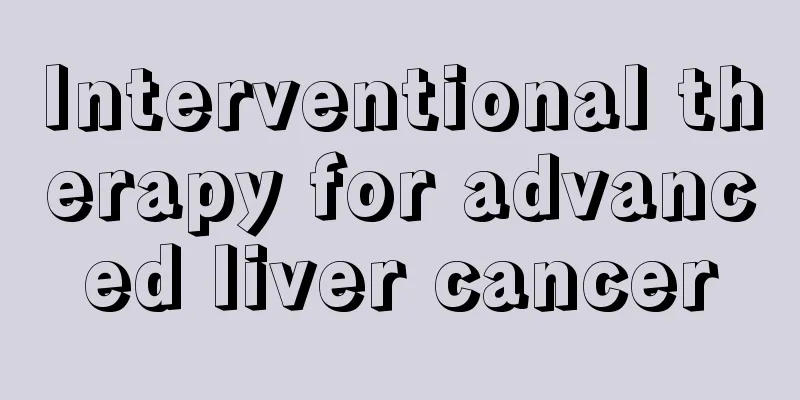Interventional therapy for advanced liver cancer

|
Interventional treatment of liver cancer refers to a type of regional chemotherapy that injects anticancer drugs or embolic agents into the hepatic artery via femoral artery catheterization. It is currently the preferred method for non-laparotomy treatment of liver cancer, and its efficacy has been confirmed. It is mainly aimed at patients with advanced liver cancer. The main principle is to administer drugs to the liver cancer supply artery or embolize the hepatic artery through a catheter. There are three methods: selective hepatic artery perfusion therapy, selective hepatic artery embolization, and selective hepatic artery chemoembolization. The so-called selective hepatic artery perfusion therapy is to puncture a small incision of 3 to 5 mm on the skin, insert a catheter into the artery to supply blood to the liver cancer, and then administer the drug through the catheter. The difference lies in the different drugs given. Selective hepatic artery embolization, as the name suggests, is to selectively inject embolic agents into tumor blood vessels and tumor blood supply arteries through a catheter to block the blood supply to the tumor. The common point between selective hepatic artery perfusion therapy and selective hepatic artery embolization is that both use drugs to affect or block the tumor vascular bed from the blood supply artery, thereby killing or inhibiting tumor cells. Selective hepatic artery chemoembolization is to give both chemotherapy drugs and embolic agents through a catheter, using both routes together. The advantages of interventional therapy are that its local drug concentration is dozens of times higher than that of systemic chemotherapy, and it blocks the blood supply to the tumor, which is not only relatively less toxic, but also more effective. In addition, it is simple to operate, safe and reliable, and can be performed on the elderly, the weak, and those with other diseases without general anesthesia, so its cost is relatively low. |
<<: Auxiliary examination methods for breast cancer
>>: How to improve the quality of life of patients with liver cancer
Recommend
Can fruit prevent ovarian cancer?
Ovarian cancer is a malignant tumor that scares m...
Count down which types of people should not take cold showers
Many men and women take cold showers in the summe...
Is ginseng good for lung cancer?
There are certain benefits for lung cancer patien...
Is hair dye harmful to the body?
Hair dyeing may seem very ordinary, but it is act...
A high-calorie diet can easily lead to prostate cancer
The occurrence of cancer has a great impact on th...
What's wrong with left intertrochanteric fracture
It is easy to slip in rainy and snowy weather, an...
Symptoms of early lung cancer that cannot be ignored
More than 40 years ago, the vast majority of pati...
How to treat nasopharyngeal carcinoma in the early stage
How to treat nasopharyngeal cancer in the early s...
What is blood gas analysis for respiratory acidosis?
Respiratory acidosis is generally a manifestation...
How to get rid of bad luck
Generally, there are some days when things never ...
What should you pay attention to and what should you not eat after nasopharyngeal cancer is cured
Cancer is a disease that we have all heard of a l...
What issues should patients with bile duct cancer pay attention to
What issues should patients with bile duct cancer...
Autumn and winter health care_what to do if your nose is dry
The first thing to consider when you have dry nas...
Consequences of bile duct sclerosis
Biliary duct sclerosis is a very common disease. ...
Does green tea relieve internal heat?
Green tea is a very popular tea beverage. It is p...









